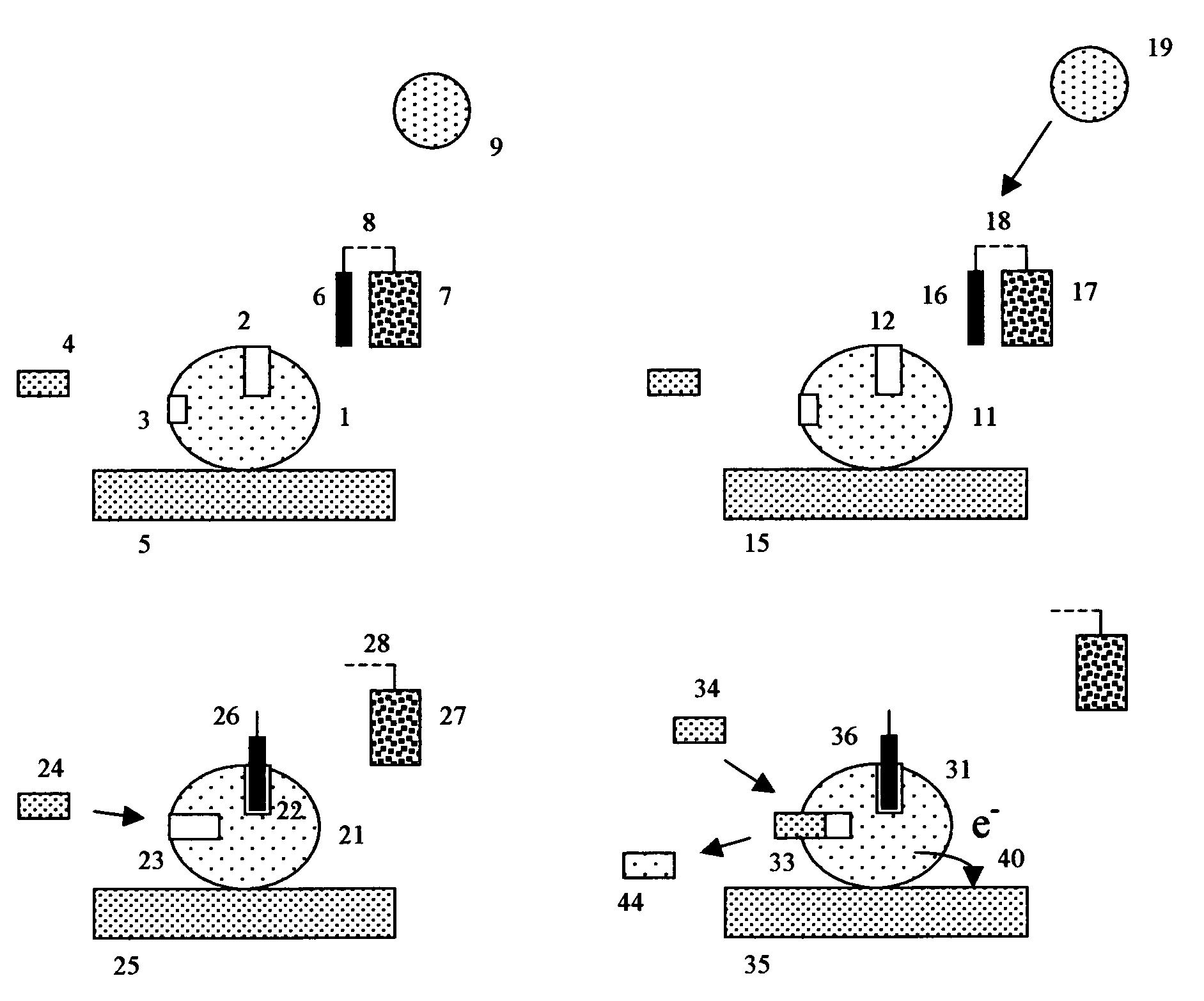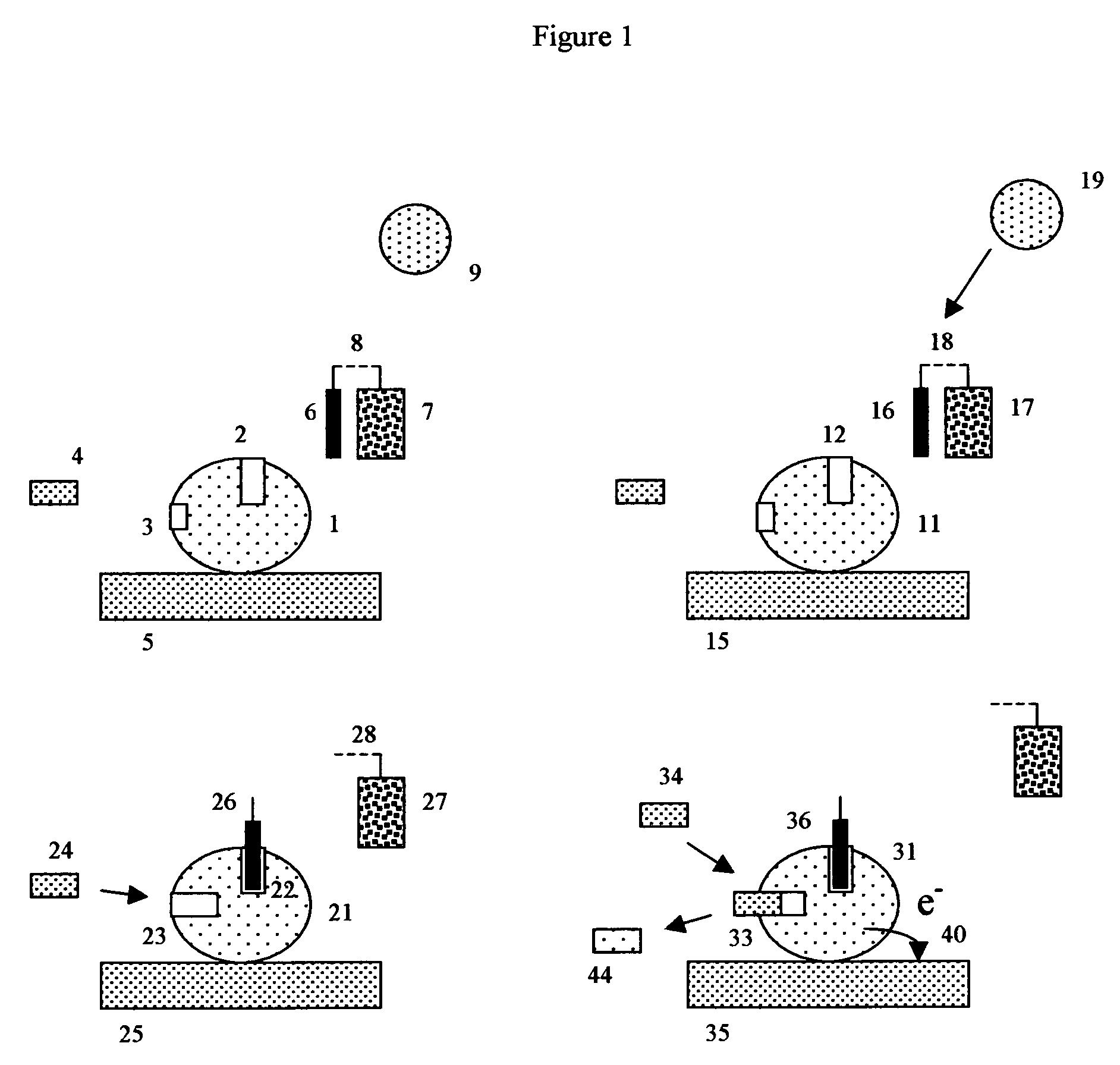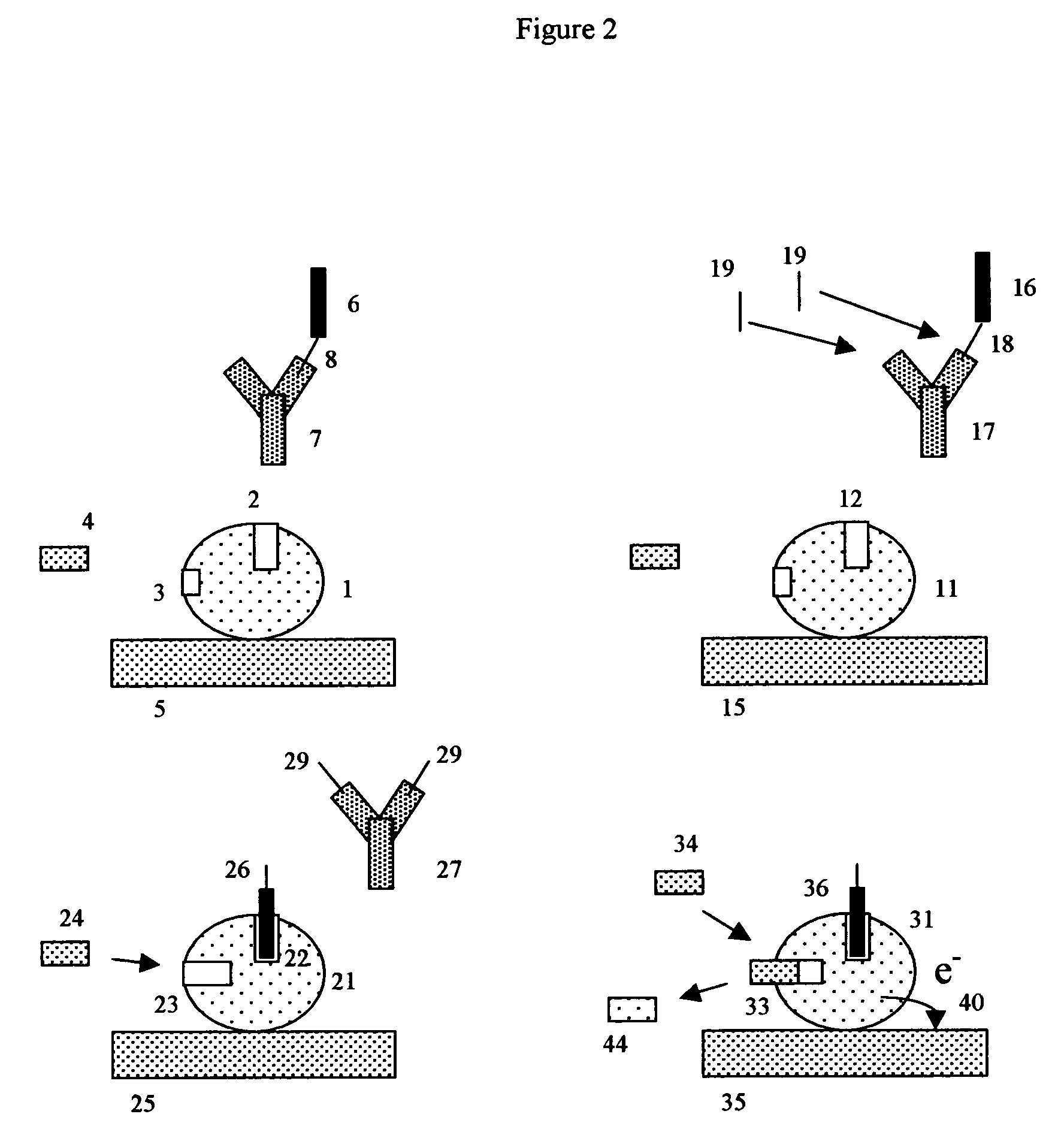Apoenzyme reactivation electrochemical detection method and assay
a technology of electrochemical detection and reactivation, applied in the field of electrochemical dry reagents, can solve the problems of less reliable optical format, less advanced technology, and high cost of devices, and achieve the effects of less reliable, less reliable, and less reliabl
- Summary
- Abstract
- Description
- Claims
- Application Information
AI Technical Summary
Problems solved by technology
Method used
Image
Examples
experiment 1
[0148]Immunochemistry experiment using antibody conjugated beads and a porous electrode. This experiment exemplifies the use of indirect “sandwich” immunoassays by constructing an apoenzyme electrochemical immunoassay sensitive to rabbit IgG.
[0149]To do this, 1-micron COOH microbeads should be conjugated with a first monoclonal antibody directed against rabbit IgG, using previously described methods. A second mouse monoclonal antibody, directed against a different epitope on rabbit IgG, should be conjugated with FAD, again using previously described methods.
[0150]The desired detection complex is somewhat like a sandwich with the bead-capture antibody (here the bead antibody is a first anti-rabbit IgG antibody) forming the first layer, the antigen (here rabbit IgG is used as the antigen) forming the middle layer, and the FAD-conjugated anti-antigen antibody (here a second anti-rabbit IgG antibody that binds to a different epitope on rabbit IgG) forming the top layer. This structure i...
experiment 2
[0160]Coagulation experiment using thrombin substrate microbeads and porous electrodes.
[0161]Depending upon the details of the coagulation assay or protease assay in question, many different suitable FAD-(substrate peptide)-Anchor configurations are possible. In the specific example where the protease (proteolytic enzyme) is thrombin, a FAD-(thrombin substrate)-anchor is desired, and the anchor is chosen to be a solid phase peptide synthesis bead, it will often be advantageous to include amino acid leader sequences on either side of the thrombin recognition and cleavage region. These leader sequences are designed to allow thrombin to get better steric access to the substrate region, and minimize the interfering effects of both the FAD and bead on the ability of thrombin to cleave the thrombin substrate region.
[0162]Such leader groups should thus be designed to promote steric access (allow the protease to physically reach the desired substrate peptide), but otherwise not interfere wi...
PUM
| Property | Measurement | Unit |
|---|---|---|
| temperature | aaaaa | aaaaa |
| diameter | aaaaa | aaaaa |
| pH | aaaaa | aaaaa |
Abstract
Description
Claims
Application Information
 Login to View More
Login to View More - R&D
- Intellectual Property
- Life Sciences
- Materials
- Tech Scout
- Unparalleled Data Quality
- Higher Quality Content
- 60% Fewer Hallucinations
Browse by: Latest US Patents, China's latest patents, Technical Efficacy Thesaurus, Application Domain, Technology Topic, Popular Technical Reports.
© 2025 PatSnap. All rights reserved.Legal|Privacy policy|Modern Slavery Act Transparency Statement|Sitemap|About US| Contact US: help@patsnap.com



